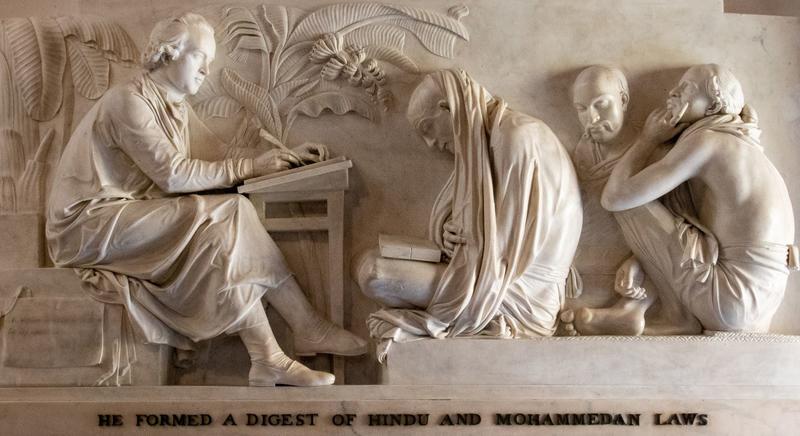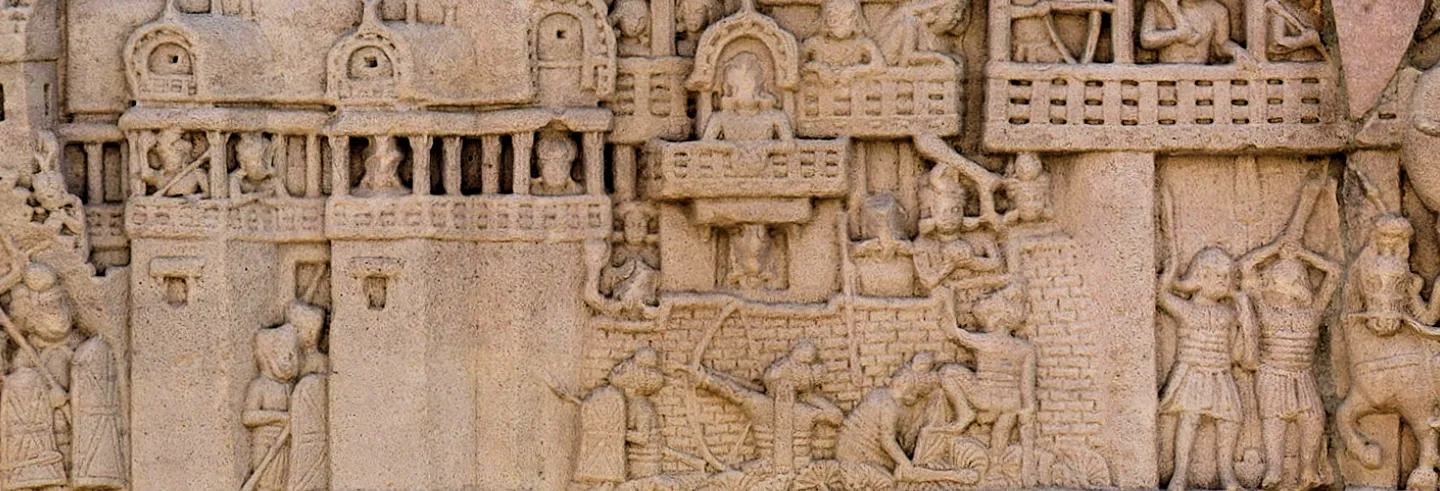The Indian Council of Historical Research (ICHR) has recently released a book titled India: The Mother of Democracy and is encouraging universities in India to launch research programmes aimed at revealing the ancient roots of democratic institutions in India.
The project is not new—it goes back to the earliest phases of Indian nationalism under colonial rule. That effort was, in its beginnings, an effort to rebut a standard British defence of their own rule in India. We, however, need to step back a few centuries to understand the origins of the defence and Indian critiques of it.
There were two mutually contradictory strains in Western thought about India and its past—one that idealised it and the other that denigrated it. Both strains have been traced in the erudite work of Donald F. Lach and his collaborators published in later 20th century in several volumes with the title Asia in the Making of Europe. Their scholarship reveals that the broad European public in the 16th and 17th centuries had hazy ideas of Asia but saw it as a land inhabited by strange people who practised magical arts and excelled in crafts.
Some Europeans also saw them as leading exemplary and virtuous lives. Others were not so sure of the last—they identified “Asia” with the Ottoman Empire whose armies nearly captured Vienna in 1683 and presented a constant menace to Europe.
Alongside this, the refusal of Indians, even Syrian Christians, to accept the truth of Latin Christianity as presented by the Portuguese baffled and angered the Roman Catholic Church. It resulted in a stream of denigration with occasional racial overtones. This polemic also filtered into European thought (Lach 1977: 556–566). This had less effect in Protestant lands such as England and Holland that were also engaged in resisting the Roman Church, and as apostates, in greater danger of interrogation and occasional incineration by the secular arm of the Holy Office (also known as the Inquisition).
There were two mutually contradictory strains in Western thought about India and its past—one that idealised it and the other that denigrated it.
Protestants, as well as sceptics like Voltaire, were therefore more open to accepting a comparative view of the virtues and weaknesses of different world civilisations. William Jones’ proof of the linguistic connection between Sanskrit, Greek, and Latin, in his “Third Anniversary Discourse to the Asiatic Society “in 1786, spurred Indophilic ideas among the intelligentsia of Europe.
Even in the early 19th century, therefore, the Governor of Madras Thomas Munro could declare to the British Parliament that if civilisation were to be an item of trade between India and Britain, “I am convinced that this country will gain by the import cargo” (cited in Guha 2019: 125). American historian Thomas Trautmann (1997) has termed the idealisation of India “Indomania” and showed that it persisted strongly into the early 19th century.
Of course, reactions against such ideas were not new either. They had long been challenged by those eager to bring the light of the gospel to Asia. As early as 1544, the future Saint Francis Xavier denounced Brahmans as acknowledging the truth of the Christian revelation but deliberately concealing it. But apart from enclaves under the Portuguese theocratic sway, such polemics had no practical applications (Guha 2019: 124).
This changed in the mid-18th century when, following the conquest of Bengal and increasing influence elsewhere in Asia, British perception of the people they now ruled could shape administrative policy, including religious and educational policy. Thus, the East India Company generally discouraged Christian missionaries from entering its territories. Only in 1813 did Evangelical pressure force them to officially permit their entry.

We may see the old theological polemic revived in the work of Charles Grant (1746–1823), an official of the East India Company and later one of its directors and Chairman, and ally of historian and philosopher James Mill. He published his Observations, in 1797. These begin by arguing that only divine favour could have led to the Company’s greatness and it was therefore its duty to “honour God” by diffusing the revelation he had bestowed on mankind.
Admitting that ancient link with the Mediterranean fount of democratic government and republican virtue would have undermined Grant’s focus on the spontaneously despotic nature of Indian governments…
Trautmann (1997) has analysed Grant’s 1797 work as a foundational text in the evangelical critique of Indophilia. Grant’s essay was to be frequently invoked to justify the Anglicisation of British India. It painted a dark picture of the moral depravity of the people of India and attributed this to the uniformly despotic governments that shaped their morals. That despotism, however, Grant argued, resulted from the intrinsic character of their religion, which was the invention of a crafty and imperious priesthood.
I have shown it was no accident that Grant, while citing the 1786 lecture where Jones announced his discovery of the kinship of ancient Greek, Latin, and Sanskrit, completely omitted mentioning that “proof” (Guha 2019). As a matter of fact, Jones had gone beyond the linguistic connection to assert,
What might be proved beyond controversy, [is] that we now live among the adorers of those very deities who were worshiped under different names in old Greece and Italy; and among the professors of those philosophical tenets which the Ionic and Attic writers illustrated with all the beauties of their melodious language. (1824).
Admitting that ancient link with the Mediterranean fount of democratic government and republican virtue would have undermined Grant’s focus on the spontaneously despotic nature of Indian governments, something that he thought they shared with all the regimes of the “East”. “Despotism,” he wrote, “is not only the principle of the government of Hindostan, but an original, fundamental and irreversible principle in the very frame of society” (1797: 74, 81, 83)
Therefore, according to Grant, despotism was an intrinsic quality of Indian or “Hindoo” society. It followed that the “benevolent despotism” that he advocated as active East India Company policy was the best of all possible worlds. His implicit logic was that since Indian society was doomed to be despotic, it should have the best possible despotism—an English one.
Four decades later, Thomas Macaulay took the truth of this proposition for granted. “We know that India cannot have a free government. But she can have the next best thing—a firm and impartial despotism” (Trevelyan 1877).
It is not surprising that Indian nationalists who wanted a larger degree of self-government challenged this. If Indians were incapable of self-rule, British despotism would have to stay indefinitely. The historically minded sought democratic or republican principles in the early forms of Indian government to refute Grant, Mill, and Macaulay. It is their work that the ICHR appears to be dusting off.
It is clear that the ICHR is re-opening a theme that was explored for several decades by pioneering scholars of ancient history.
R.C. Majumdar first published Corporate Life in Ancient India in 1919, and a revised and enlarged edition in 1969. A.S. Altekar published his dissertation on village self-government in 1927 and a larger study of ancient Indian governmental institutions (State and Government in Ancient India) in 1949. Chapter 6 of this book deals with republican or collective (gaṇa-based) forms of government. Elsewhere in the work, Altekar emphasises the autonomy of smaller units, such as village communities and what I have called “village-clusters” or parganas (Guha 2013). This was echoed by the Kisan Sabha leader N.G. Ranga, speaking in India’s Constituent Assembly (1946-49), argued in favour of village councils on the basis of a thousand years of achievement by South Indian panchayats (R. Guha 2007: 119).
The theme of an ancient Indian democracy is also found in D.D. Kosambi’s Introduction (1956), where he emphasises the democratic structure and collective decision-making in what he perceived to be tribal organisations in the age of the Buddha. He also points out that the rising kings “could not allow such dangerous examples of democracy to survive” (1956: 153–54)
It is clear that the ICHR is re-opening a theme that was explored for several decades by pioneering scholars of ancient history. Indeed, the list below matches Majumdar (1969) in almost every detail. According to a report in the Deccan Herald, the ICHR has suggested topics such as “Existence of Ganarajya in Kalinga During Asoka’s Invasion”, “Harappans–the Pioneering Architect of the Democratic System in the World: Archeological Perspective”, “Governing Principles of Democracy in Ancient Sanskrit Scripture based on Sruti, Smiti Itihasa and Mahakavya Texts”, “The Tradition of Local Self-Government in Ancient and Medieval Tamilnadu”, “Democratic Thoughts and Traditions as Reflected in Arthasastra”, and “Janatantra as perceived through the Coins of Gana-Janapadas (BCE 400 – 300 ACE)” (Madhukalya 2022).
The only item in the ICHR list that appears to be founded on a research article published in recent years is the Harappans as pioneers of democratic functioning (Green 2017). It is possible that new evidence has emerged or will emerge. Or perhaps this will just be a rehash of century-old ideas that were neglected for decades.
But setting the question of originality aside, we may also consider the validity of the search for a single unique parent of ‘democracy”, however defined. Such a search assumes the existence of a single centre for all democratic institutions, a place from which it diffused to other human societies—as the now discredited idea termed “diffusionism” holds. Anyone making that argument has to face the difficulty of explaining why the said institution originated in only one locus to begin with, and then of demonstrating its diffusion to other places.
[W]e may … consider the validity of the search for a single unique parent of ‘democracy”, however defined. Such a search assumes the existence of a single centre for all democratic institutions…
It would be a difficult task and one that great Indian scholars did not attempt. Perhaps we should be satisfied with the idea that the Indian subcontinent has been one of the sites where the idea of limited government and countervailing institutions has existed through time.
American political scientist David Stasavage argues that efforts to create institutions that limited the power of any one actor in the political system—his minimal definition of democracy—are to be found in many parts of the world in the remote and the recent past (2020). No one society can claim sole credit for this—all have the potential to achieve it. Perhaps that is what the ICHR projects may discover, merely reconfirming the arguments of pioneers such as Majumdar, Altekar, and Radhakumud Mukherjee.
But don’t hold your breath.
Sumit Guha is a professor of history at the University of Texas-Austin. His most recent book is Tribe and State in Asia through Twenty-Five Centuries (New York: Columbia University Press, 2021).









